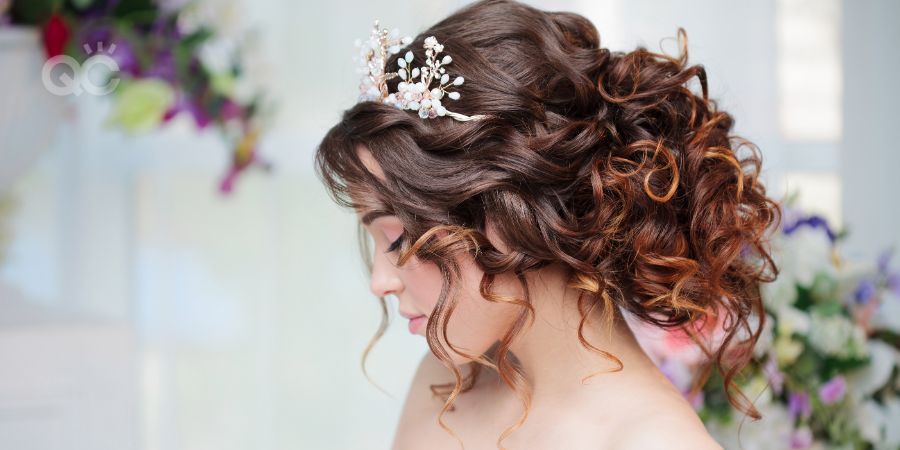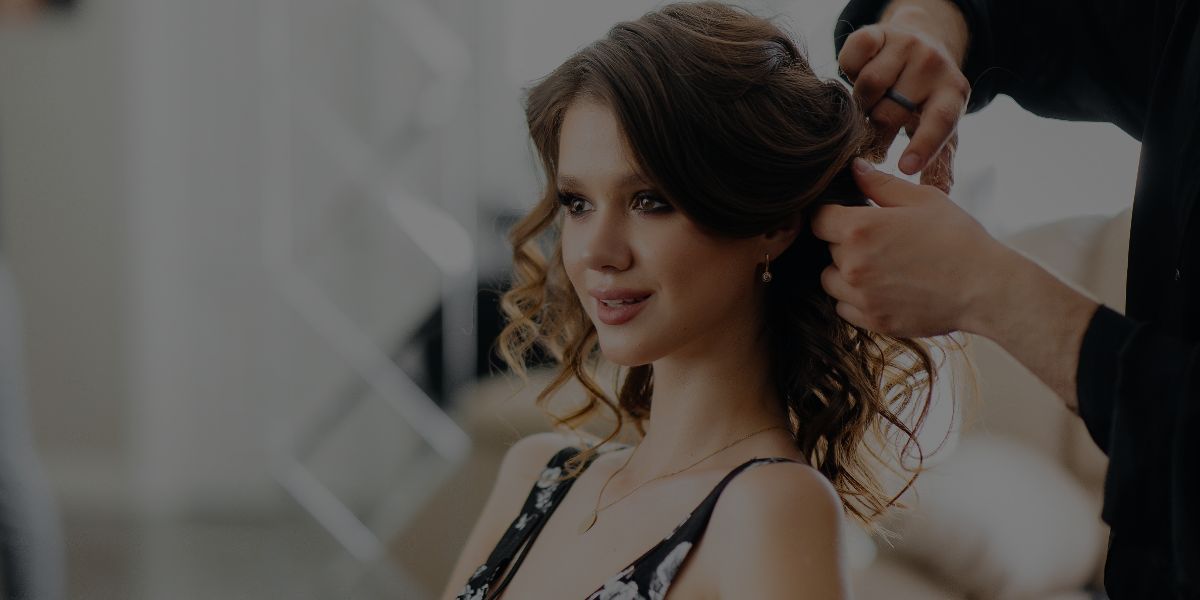So, you’ve been thinking about a career in hair. Awesome! But do you know the differences between hairdressing and hair styling? If you don’t, that’s totally fine. In fact, many people mistakenly use the terms interchangeably – although this is actually wrong.
The fact is, there’s a huge difference between the two! It lies mainly in the type of work you’ll be doing, the professional training you’ll need, and the tools you’re qualified to work with. This is why today, we’re going to take a deep-dive into these differences.
So, let’s get started!
What Are The Types of Hair Styling?
If your dream is to be a professional hair stylist, you’ll instead be qualified to offer any of these following services:
- Washing and blow-drying hair;
- Creating volume;
- Creating the illusion of various haircuts (without actual performing them) through styling techniques;
- Styling hair for special occasions (i.e. weddings, red carpet events, photoshoots, etc.)
- Braiding hair;
- Creating popular styles, period hair styles, etc.
What Are The Types of Hairdressing?
Before we delve into the similarities and differences between hairdressing and hair styling, it’s important to understand each one a little better on its own.
As a professional hairdresser, you’ll be qualified to offer any of the following services:
- Washing and blow-drying hair;
- Semi-permanent to permanent hair coloring/dyeing;
- Perms;
- Artificial hair extensions and/or weaves;
- Hair cutting;
- Chemical relaxing and/or straightening;
- Hair plugs, wig fitting, and wig styling;
- Braiding and styling
The Similarities
Let’s now take a minute to note the many similarities shared by these two jobs!
Professional Care
Both hairdressers and hair stylists (should) want to ensure they protect their clients’ hair from damage as best they can. After all, a healthy head of hair translates to beautiful final looks! Moreover, both professions want their client to look their best!
In QC Makeup Academy’s Hair Styling Essentials Course, students learn how to protect their clients’ hair from heat damage and cuticle damage. Another important aspect of this 5-unit certification course is learning how to keep it looking healthy overall.

Determining What Suits The Clients’ Style
Trained hairdressers and hairstylists are also great at helping their clients figure out looks that’ll best suit them and their needs. Listening to clients speak about what they want – and actually hearing them – is a huge part of both jobs.
For example, a client’s lifestyle could determine how they would want their hair to look. Some prefer a no-fuss bob if they’re working outside. You might even find yourself in the opposite situation, such as trying to dissuade a corporate lawyer from getting rainbow tresses!
But hair professionals also study up on facial features and hair type as well. There are so many hairstyles to choose from – the list is infinite! That said, the best hair stylists and hairdressers know that some hair cuts or styles just aren’t viable for certain clients.
Interpersonal Skills Are a Must
Like makeup artists, both hairdressers and hair stylists will be working with clients regularly. In order to carry out your professional duties in either career, you need to have strong interpersonal skills!
When the client sits in your chair for an extended period of time, it would be downright awkward not to engage in polite conversation. Yes, sometimes clients will treat their professional as a therapist, and as a result, you won’t talk much. But other times, you may have an introverted client that needs you to lead the way a little bit.
If you’re a hair professional who can make light conversation with even the shyest of clients, you’ll have a long line of loyal clients in no time!
Is There a Difference Between a Hairdresser and a Hair Stylist?
Earlier, when looking over the types of hairdressing vs. the types of hair styling, you may have picked up on a very notable difference between the two. This is because, while both hair professionals possess some of the same skills and knowledge, they ultimately don’t do the same job.
Duties
Hairdressers: You’ll learn about cutting hair, chemical treatments, and most permanent hair extensions. After processing and cutting hair, you can then continue to style the hair. (Alternately, a hair stylist could work on the hair as well.)
Hairstylists: You’ll learn heat styling to create curls, volume, and waves. Furthermore, you’ll also learn to combine techniques and create special-occasion up-dos, period looks, and styles for the red carpet.
Professional Training
When deciding the career that’s right for you, you need to consider the training requirements for each. The type of qualifications required is another difference between hairdressing and hair styling.
Hairdressing may require a cosmetology license in your country or state. That’s because you exact “permanent” changes for a client’s hair structure. Going beyond conditioning treatments, you’ll also learn to cut, perm, and dye hair.
The last two procedures are chemical treatments. Hairdressers need to have specialized training and work with specialized equipment in order to perform these procedures. Importantly, this is something that hairstylists aren’t licensed to do.
If cutting and coloring hair doesn’t exactly interest you, hair styling is the better career path for your goals. Temporary hair styling for special events falls into this category.
Now, it’s worth pointing out that hair styling is not actually regulated in many places, since harsh chemicals are not used in styling and the hair isn’t cut. For example, if a client wants a bob, a hairdresser would cut a bob for them – whereas a hair stylist would create the illusion of a bob using styling techniques.
As such, many aspiring hair stylists inaccurately think that they don’t need any formal training to start working in this field. But they couldn’t be more wrong! Like with any beauty profession, if you truly want to be the best and gain the trust of your clients, you’re going to need to get professional hair styling training.
Otherwise, you’ll be setting yourself up at a major disadvantage and will find it difficult to land bookings.

Where You Can Work
Hairdressers mostly work in salons and spas. While many choose to do freelance on the side, they mostly focus on styling outside of the salon environment. This is because their equipment (such as scissors, dye, bleach, and other chemical products) are stocked by the salon itself. The breadth of their services can only be performed with a wide range of products as well—and they’re not often portable!
On the other hand, many hair stylists work mobile at events, for example. Their kit is much more on-the-go-ready. Additionally, hair styling goes hand-in-hand with makeup artistry! Hair styling is a great skill for MUAs who want to offer more services, attract more clients, and increase their income.
Especially when offering full bridal and wedding party services, they stand to make a lot of money!
So, Which One is For YOU?
If you’re considering a career in the beauty industry, hairdressing or hair styling might be for you! Many differences exist between these careers, but they both require serious technical skill and creativity.
If you’re looking to break into the industry ASAP, a career in hair styling might be your best bet. Hairdressing requires a cosmetology license. This often means you’ll study for 1-2 years at a cosmetology school before getting to book your first client.
(Not to mention, cosmetology schools goes deeper into other beauty practices you might not have any interest in – such as makeup, skincare, and nail care.)
As a hairdresser, you’ll work with clients to find a balance of what they want and what may look best for them. It takes lots of hard work and study to complete all the different treatments for your clients. If you’re detail-oriented and want to help clients look their best longer-term, becoming a hairdresser would be a great career choice for you!
But don’t get us wrong – hair styling has its challenges, too! You’ll need plenty of creativity in order to style hair you won’t be fundamentally altering. Therefore, you’re not only working with what’ll look best on them; you also have to consider what will work with their current haircut!
As a hair stylist, you’ll be offered many unique career possibilities. The world will essentially be your oyster!

Final Thoughts
It’s important to know that whichever profession you first choose, that you’re not stuck forever. The beauty industry demands its professionals to evolve. As such, you may decide to be a hairdresser now – but find passion in doing wedding hair and makeup.
Or, it can be quite the opposite. You may start as a stylist and eventually want to learn the art of balayage. Either way, whichever path you choose, you’re in for a highly rewarding career!
So, which career ARE you most interested in? Let us know!

Catherine Hammond, thank you ever so for you post.Much thanks again.